The coronation of King Charles III, the wedding of Prince William and Kate Middleton, and the funeral of Queen Elizabeth II—these events are all connected by one place. This building, aside from memories of the most significant royal ceremonies, boasts remarkable architecture and an impressive collection of true masterpieces.
Westminster Abbey, officially known as The Collegiate Church of St. Peter at Westminster, is one of the most famous religious buildings in London and likely all of the United Kingdom. Although it is not the cathedral for the Westminster diocese, this Anglican church certainly doesn’t lack for visitors. After all, who wouldn’t want to see the place where British monarchs first don their crowns during a visit to London?
Edward the Confessor’s Monastery
In 1040, King Edward the Confessor decided to build his royal palace on the banks of the Thames, and the nearby Benedictine monastery from 960 provided an ideal foundation to establish a worthy church right next door.
The king not only restored but also expanded the monastery, creating a stone church dedicated to Saint Peter the Apostle. Unfortunately, Edward the Confessor—as he became known in later years—passed away just days after the church’s consecration. His illness was so severe that he was unable to attend the dedication ceremony. However, as per his wishes, his remains were laid to rest in this very church.
FUN FACT: There is a specific reason why Edward the Confessor was particularly invested in constructing the church. The king had vowed to undertake a pilgrimage to Rome, but due to political complications, he could not fulfill his promise. The reconstruction of the abbey and the construction of the new church were meant to serve as an atonement before God, or so the reigning Pope suggested to the king.
The Further Fate of Westminster Abbey
The form given to the church by King Edward survived for almost two centuries. However, in the mid-13th century, King Henry III took over and, inspired by the Gothic cathedrals being built across England at the time, decided to remodel the abbey in the English Gothic style. This same ruler also decreed that Westminster Abbey was to serve not only as a great monastery and a place of worship but also as the venue for coronations and royal burials.
Henry’s death in 1272 and the kingdom’s financial troubles led to a halt in construction, which resumed in the 14th century. However, significant progress wasn’t made until the reign of Henry V, who helped ensure the completion of the abbey’s church in 1495.
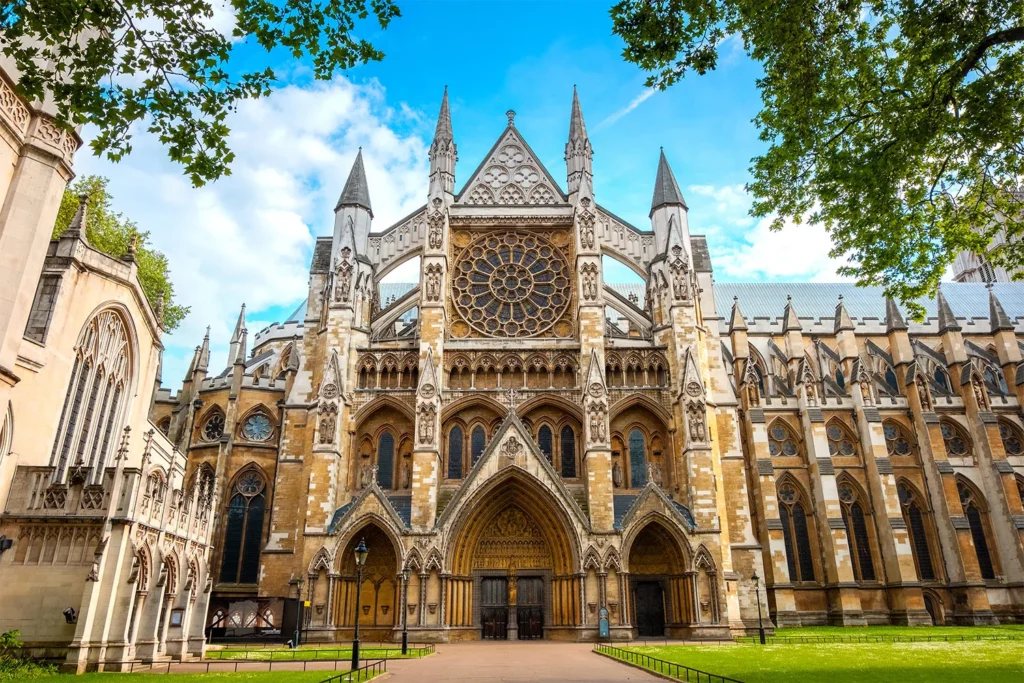
However, this was not the end of the building’s metamorphosis. The following centuries brought further reconstructions, including alterations to the altar, chapels, and towers. The last of these changes occurred at the end of the 19th century. The modifications made in subsequent years were primarily related to renovation and preservation of historical monuments.
FUN FACT: Since 1560, Westminster Abbey has held a special status known as “Royal Peculiar.” This means that the church is not subject to any diocese but instead falls directly under the jurisdiction of the monarchy. Another prestigious title was awarded to the church in 1987 when, due to its historical and symbolic significance, it was designated a UNESCO World Heritage site.
Coronations of Kings and Queens of England
The first coronation ceremonies at St. Peter’s Collegiate Church took place in 1066, when William the Conqueror was crowned. Since then, 40 subsequent British monarchs, upon ascending to the throne, wore their crowns for the first time in the so-called “theatre” of this church. As a result, inside the church, you can see the extraordinary coronation chair adorned with decorative carvings of plants and birds. During coronations, the chair is placed directly in front of the church’s main altar, but it is usually located in St. George’s Chapel, near the western doors.
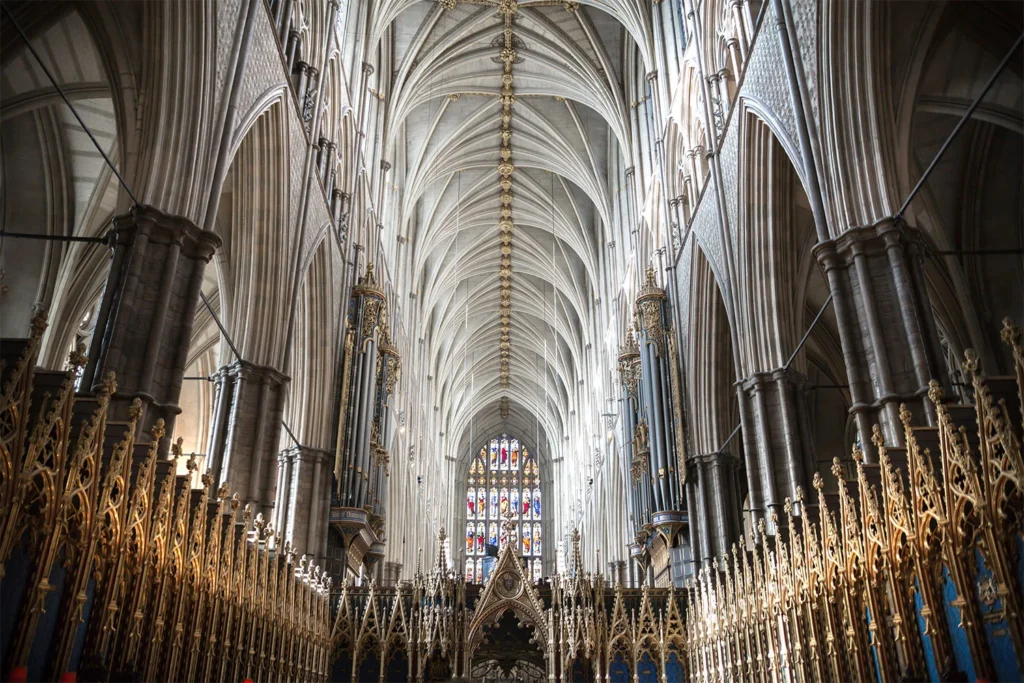
Today’s coronations of British monarchs follow long-standing traditions. These customs encompass the content of the oath, attire, and the liturgical ceremony, with one particular tradition concerning the musical arrangement. During the coronation of George II of Hanover in 1727, four special coronation anthems were performed by the German composer Handel. One of these pieces was the “Zadok the Priest” in D major. Since then, this anthem has become an inseparable part of the coronation service held at St. Peter’s Church.
Not Just Royal Funerals
The abbey has witnessed many significant events for the country, heralding both new beginnings and difficult farewells. Within Westminster Abbey, a total of 3,300 distinguished individuals from the UK and around the world are buried. Among them are not only King Edward the Confessor, Queen Elizabeth I, King Henry VII, and over 10 other monarchs, but also writers, musicians, scientists, and politicians. You will find the tombs of Charles Dickens, Isaac Newton, and Charles Darwin. In 1997, the funeral of Princess Diana was held there, and in 2018, the renowned physicist Stephen Hawking was also laid to rest at Westminster Abbey.
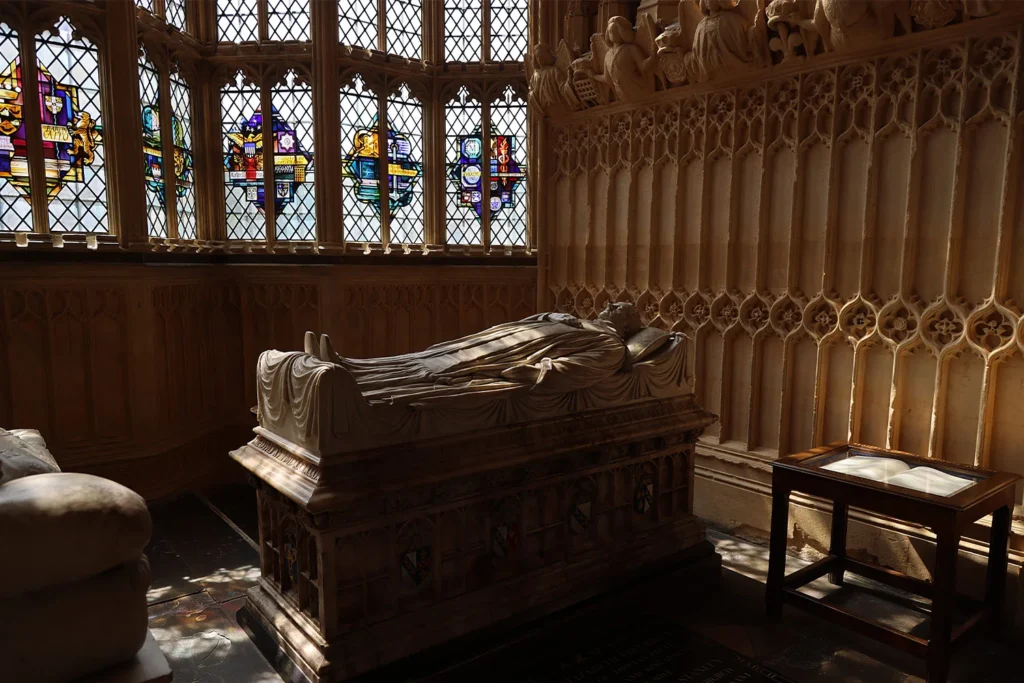
Not all distinguished creators were granted burial in Westminster Abbey. For religious or moral reasons, figures such as William Shakespeare and Lord Byron were denied this honor. However, they were commemorated in other ways, with dedicated memorial plaques or statues, forming the most important collection of monumental sculptures in the country.
The Westminster Tomb of the Unknown Soldier
One grave of particular significance is the Tomb of the Unknown Warrior. An unidentified soldier who fell on a European battlefield during World War I was buried there. You might say it’s nothing special, as there’s a similar grave in Warsaw. And indeed, similar monuments can be found in Poland, France, Ukraine, and many other countries worldwide. But the one in Westminster Abbey was the first of its kind, created to commemorate the unprecedented number of war casualties.
The funeral of the unknown soldier took place on November 11, 1920, the second anniversary of the war’s end. Since then, the tombstone has been the only floor stone in the abbey that no one is allowed to walk on. Still skeptical about its significance? Consider that every foreign head of state visiting the UK begins their official visit by laying a wreath on this very grave.
Westminster Abbey as a Venue for Other Ceremonies
Funerals and coronations are not the only ceremonies held in Westminster Abbey. One monarch was actually born at the abbot’s house adjacent to the church. Edward V was born on November 2, 1470, while his mother sought refuge in the abbey during the Wars of the Roses. The abbey also hosts jubilees, with the first ever held there being Queen Victoria’s Golden Jubilee in 1887. During this event, Queen Victoria became the only monarch in history to sit on the coronation throne twice.
Queen Elizabeth II and her husband, Prince Philip, also celebrated numerous anniversaries with services held at the collegiate church. And speaking of weddings, Westminster Abbey has hosted an impressive 16 royal weddings! Notably, it was the venue for the wedding of Prince William and Kate Middleton.
Architecture of Westminster Abbey
The stories witnessed within the church are not the only reason to visit Westminster Abbey. Its exceptional architecture also deserves attention. The current building mostly consists of remnants from the project initiated by King Henry III, but some rooms still date back to the time of Edward the Confessor. If you are looking for the oldest parts of the church, visit the famous Pyx Chamber, which still features a medieval tiled floor, including several tiles from the 11th century.
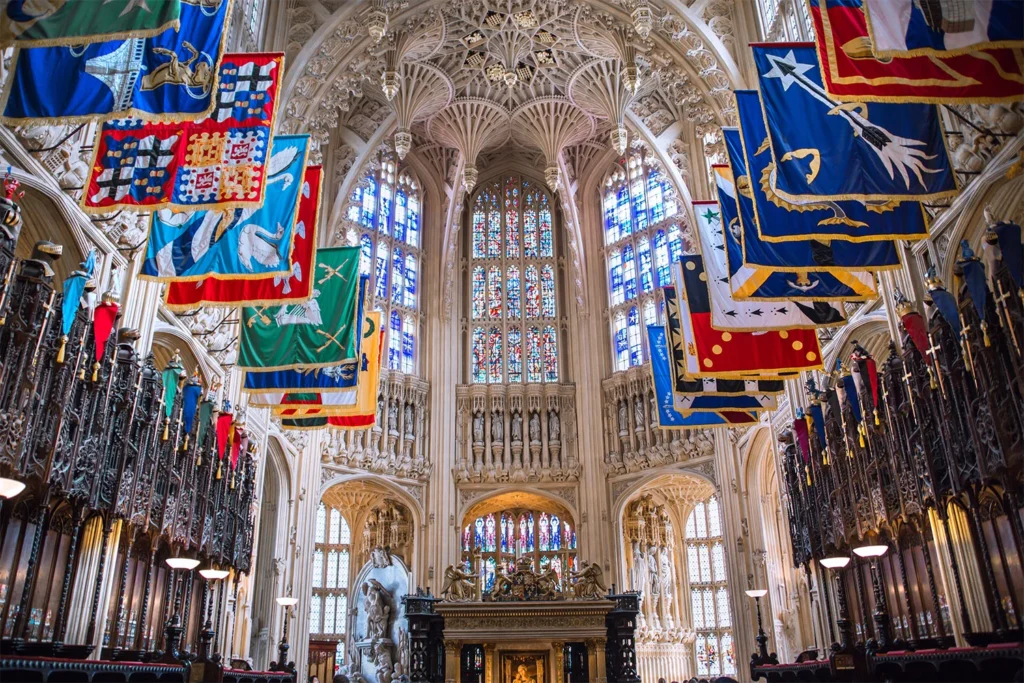
During any walk through the abbey, you certainly won’t miss the main nave, the altar, or the spacious “theatre” between them, where coronations traditionally take place. However, there are also several less obvious areas in the church that deserve just as much attention, and the most significant of these is Henry VII’s Chapel, known as the Lady Chapel. It’s no wonder that 16th-century historian John Leland called it the “wonder of the world.” Inside, it’s hard to focus on just one element of the decor. Your gaze will be drawn upwards to the spectacular fan-vaulted ceiling and towards the walls featuring 95 statues of saints. It is also the resting place of no fewer than fifteen kings and queens!
Masterpieces Adorning Westminster’s Interiors
If the architecture itself impresses you, you will surely find it hard to take your eyes off the exceptional works of art. The interiors of the abbey are enhanced by icons, oil paintings, and stained glass windows, but two elements of the decor particularly capture visitors’ attention. The first is the Cosmati Pavement, located in front of the high altar of Westminster Abbey. Looking at it closely, it’s hard to believe that these intricate mosaics date back to 1268.
The colorful glass combined with precious stones forms geometric patterns that make up a multicolored walkway covering more than 7 square meters. Among the ornaments, you can also spot three inscriptions. The brass letters forming the texts are seriously worn, but experts agree that the writings referred to prophecies about the end of the world. Not everyone is impressed by very old artifacts, but lovers of more modern art will also have something to admire. The Queen’s Window is a vibrant, colorful, contemporary piece commissioned in honor of Queen Elizabeth II—the longest-reigning monarch in British history.
The window, standing 8.5 meters high and 3.5 meters wide, is located in the abbey’s north transept. Designed by David Hockney, it depicts a rural scene with hawthorn blossoms and utilizes the artist’s characteristic bold palette of colors. Why this particular theme? The stained glass was simply meant to reflect Elizabeth II’s interest in and admiration for the countryside and its natural beauty.
Queen’s Diamond Jubilee Galleries
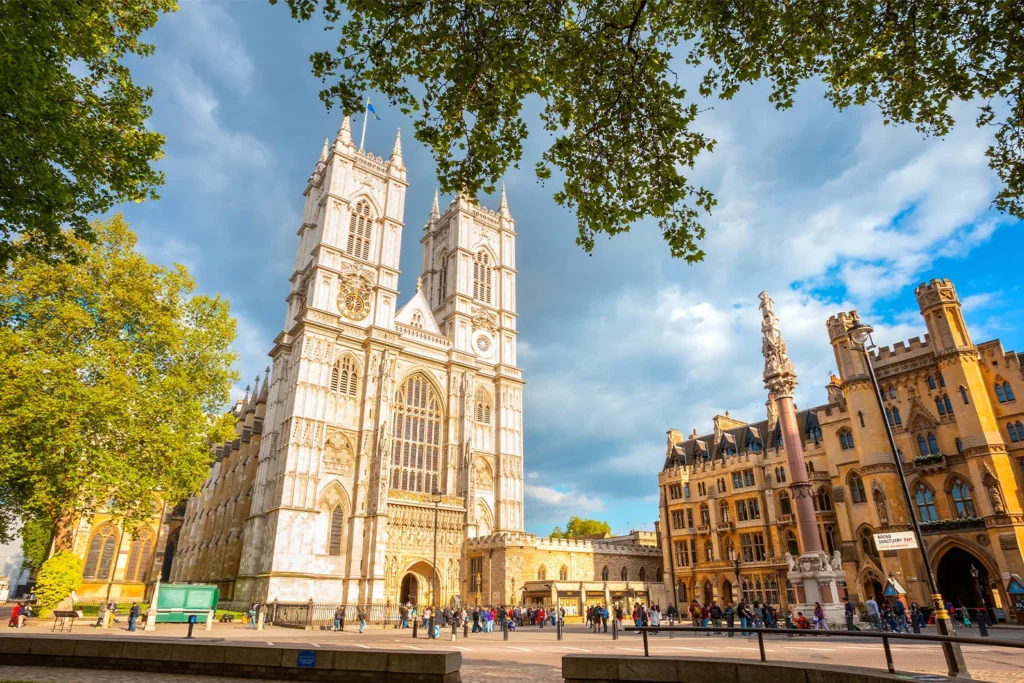
Above Westminster Abbey, often bustling with tourists, lies an additional level that visitors can explore with an extra ticket to the Queen’s Diamond Jubilee Galleries. This atmospheric upper floor, never previously used for public purposes, is now an exhibition space, providing the perfect backdrop for artifacts that tell the story of the abbey’s history, its immense significance, and its connection to the British monarchy. If you choose to visit this level, you’ll see an impressive collection of statues, manuscripts, paintings, and furniture, as well as the original marriage contract between Prince William and Kate Middleton.
Visiting Westminster Abbey
If you want to see the exact altar where Prince William and Kate Middleton said “I do,” you’ll need to purchase an admission ticket. It’s best to do so online to avoid the long lines at the ticket counters.
For those who wish to finish their tour without any lingering questions or doubts, a guided tour is an excellent option. The expert commentary will reveal the abbey’s most hidden secrets and clarify any uncertainties. Additionally, with a guide, you can access areas of the abbey not available to regular visitors, such as the tomb of St. Edward the Confessor. Individual tickets are also available, which include an audio guide offered in English and 13 other languages. You can purchase all these tickets, among others, via this site.
After your tour, you can visit the restaurant or the gift shop, where you’ll find publications, decorations inspired by the abbey’s interior, and items commemorating significant figures and events, such as tableware marked with the date of King Charles III’s coronation. Before planning your visit, remember that the church is, above all, a functioning place of worship, and therefore, tourist access is closed on Sundays and holidays.
Practical information
- It is best to purchase tickets for Westminster Abbey in advance. This way, you can avoid standing in long lines and reduce the risk of tickets being sold out.
- Address: Dean’s Yard, London SW1P 3PA, United Kingdom
- Buy tickets on GetYourGuide